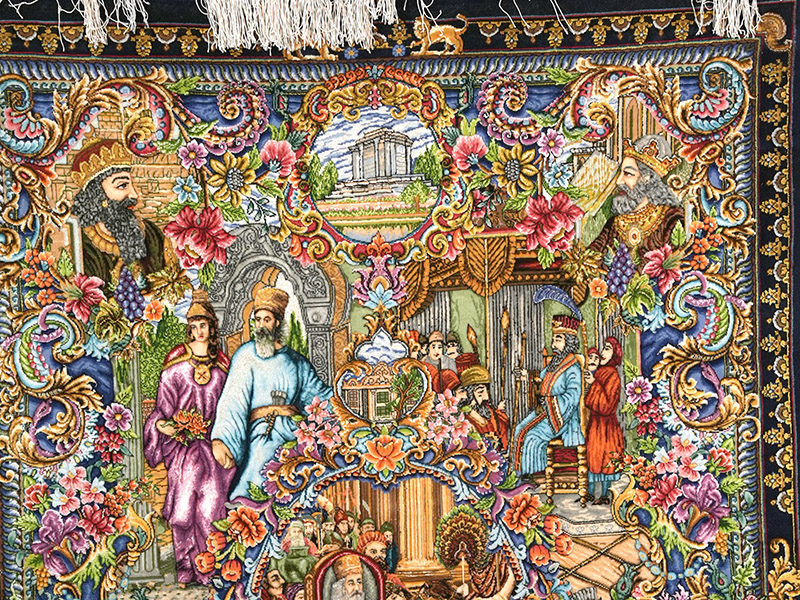The Rich Tapestry of Iranian Handwoven Silk Carpets
The Rich Tapestry of Iranian Handwoven Silk Carpets: A Timeless Art
Introduction:
Iran, renowned for its deep-rooted cultural heritage, has a longstanding tradition of crafting exquisite handwoven silk carpets. These masterpieces are not just floor coverings but intricate works of art that encapsulate the skill, creativity, and cultural richness of the Iranian people. In this article, we will explore the history, craftsmanship, and significance of Iranian handwoven silk carpets.
History:
The art of carpet weaving in Iran dates back thousands of years, with evidence suggesting that it predates the Persian Empire. However, it was during the Safavid Dynasty (1501-1736) that the craft reached its zenith. The Safavid rulers were patrons of the arts, and their support fostered the development of intricate carpet designs, with silk becoming a prominent material.
Craftsmanship:
Iranian handwoven silk carpets are characterized by their meticulous craftsmanship. Skilled artisans, often following centuries-old techniques, hand-knot silk threads into intricate patterns on a loom. The use of silk, known for its lustrous quality, adds a luxurious touch to these carpets. The process is time-consuming, with larger carpets taking several months or even years to complete.
Designs and Patterns:
The designs of Iranian silk carpets are diverse and draw inspiration from Persian culture, nature, and geometric patterns. Floral motifs, intricate arabesques, and medallion designs are common, reflecting the cultural and artistic influences of different regions within Iran. The vibrant and harmonious color palette, often featuring rich blues, reds, and golds, adds to the allure of these carpets.
Significance:
Iranian handwoven silk carpets are not merely decorative pieces but hold cultural and symbolic significance. Traditionally, they were symbols of status and wealth, adorning the homes of royalty and aristocrats. Today, these carpets continue to be highly valued for their artistic merit and are sought after by collectors worldwide.
Regional Variations:
Iran is a vast and diverse country, and different regions have distinct carpet weaving traditions. For example, the city of Isfahan is known for its finely detailed, intricate silk carpets with central medallion designs, while Qom produces carpets featuring elaborate floral patterns. Tabriz carpets often showcase a blend of silk and wool, creating a unique texture.
Challenges and Preservation:
Despite the enduring popularity of Iranian silk carpets, the craft faces challenges such as competition from machine-made carpets and economic constraints. Efforts are being made to preserve this traditional art form through educational initiatives and support for skilled artisans.
Conclusion:
Iranian handwoven silk carpets stand as timeless testaments to the artistic prowess of a culture steeped in history. These exquisite pieces not only enhance the aesthetic appeal of any space but also serve as tangible links to Iran's rich heritage. By understanding and appreciating the craftsmanship, designs, and cultural significance of these carpets, we can contribute to the preservation of this extraordinary art form for future generations.

